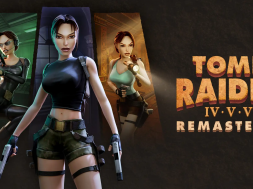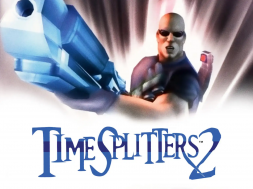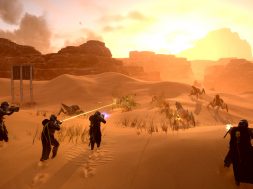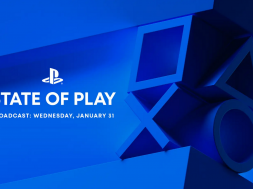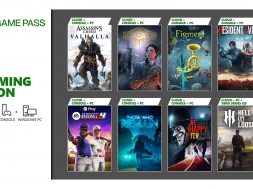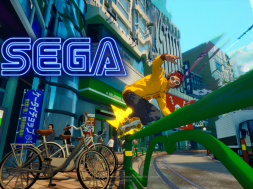In my teenage years, I spent many a school lunch and an after-school evening playing Magic: The Gathering and Yu-Gi-Oh. I never quite had the time, money or energy to be particularly good at them, but I played them nonetheless. Since leaving school, I’ve all but fallen out of the CCG circle, bar the occasional game for old times sake with friends on a lazy Friday evening, but I’ve always liked the idea of keeping up with one of these games, just without the time or money investment that comes with the territory. Needless to say, nothing quite managed to scratch that very particular itch. Until now. Enter Hearthstone and it’s open beta.
Blizzard Entertainment are not a company who need introduction. Through World of Warcraft, they’ve been the catalyst for the stereo-typical MMO experience and have managed to keep WoW relevant with a large community for ten years now, despite the fact that it’s still paid subscription rather than the now regular free-to-play platform. However, this hasn’t stopped them from wanting to expand into the free-to-play, micro-transaction world to see if they could get the formula right of making the game sustainable without losing a lot of money in the process of it gaining a serious following or the game being a member of the much-despised pay-to-win format. Hearthstone is that attempt, and I got to say, they get the formula pretty close to spot on.
Expanding on safe ground with the existing and expansive Warcraft lore, Hearthstone is a 1v1 CCG based around quick tactics and even quicker gameplay. Players choose one of nine heroes, start off with 3 or 4 cards, depending on who goes first or second, a deck of 30 cards each and one mana. Each turn, your mana goes up by one (max. 10), which will allow you to (hopefully) play more, better cards from your hand and eventually destroy your opponent. As soon as you boot up the game and begin the tutorial, it becomes obvious how simple the gameplay is, and how stream-lined the learning and playing process is. Tutorials are notoriously boring, and frankly, especially in recent times, altogether too long. This one is different, with the exceedingly charming narration and visuals it flows really nicely and proves to teach you the ways of the game without bogging you down in different rules and mechanics – in fact, the tutorial only shows you the basic rules, the rest are revealed as you unlock cards relevant to them or face an opponent who uses them, such as the hero weapons. You learn how to play the game, but you also develop a taste for learning more about the game where the tutorial leaves off, which leads you to the single player mode, or ‘Practice’.
This practice mode is where you unlock all the heroes by facing them one by one, and then levelling each one to 10 in order to unlock all their basic cards. This being an online-centric title, the single-player mode could very easily have been shoe-horned in, or completely minimal. It is closer to the latter, but it doesn’t feel like it was only put in for the hell of it. You learn much more about the game in the grind to get each hero to level 10, and before you’ve even opened a booster, built a deck or played another player, you’ve decided who your favourite heroes are, what kind of strategies you enjoy, and what kind of creatures and spells you may want to avoid using. I spent the first week grinding through all the heroes, and enjoyed every second of it, even though I was using basic pre-made decks for the heroes. I found I had developed a very strong idea of where I wanted my decks strengths to lie by the time I got to deck construction, and knew which hero’s specific creatures and spells could make it happen.
Which brings me onto my favourite, and the most important part of the game; the perfectly stream-lined processes. Micro-management in an MMO, or MOBA or whatever this is, can be daunting, to the point of inaccessibility – too little of it though, and you run the risk of losing the online gaming audience who enjoy spending hours tweaking their online better halves. Hearthstone manages to hit that sweet spot between being able to spend hours tweaking your decks and getting the kind of strategies you want out of your heroes and cards, while also being fast and charming enough to ensure you don’t get bored and weighed down in menus and options. I mentioned earlier the game was based around fast tactics and faster gameplay, and I absolutely meant it. Rarely has a game I played, both online and offline, lasted more than fifteen turns, and even rarer that the game would go down to the ends of our decks before a victory was insured on one side or the other. It’s not that the game is based on quick-fire moves, there’s plenty of big cost cards and strategies that can be utilised, it’s that the mechanics are simple and the spells manageable to the degree that almost without thinking about it you start stringing creatures and spells together and find yourself taking glee in a combo crippling your opponents line of creatures, and almost crying in disgust as your key card is countered, bringing the entire process to it’s knees.
The variety of cards is incredibly wide, too. Creatures come in all shapes and sizes, with many different characteristics that come with each hero’s army. Maybe you want a Murlock deck, with low cost creatures that boost each other up to have a small army by turn 4? Or perhaps you’re looking for slow and steady, so you stick with a mix of creatures with Taunt (must kill this creature before attacking you directly) and some creatures like Raid Leader to boost attack and direct damage? Or maybe you fancy taking a leaf out of Totalbiscuit’s book and build a deck composed almost entirely of the Legendary creatures for high cost but very high damage and lock-down of your opponents army. The options are there, you just need to explore them. Speaking of legendaries, I can’t not mention the cherry on the cake of this game: it’s lack of pay-to-win. It has micro-transactions, but it is most certainly not pay-to-win. You can buy booster pack of cards in the game, or you can earn gold beating other players, and you can pay for entry into Arena mode, where you play to win 9 games in a row using a deck created from randomly generated groups of cards the game gives you. That’s it. Nothing is mandatory, and the game is very well balanced in that even with the legendaries, the basic cards can still win the game, you just need to use them right. No card, or strategy, is fool proof, and that just keeps you coming back for more.
I don’t like MMO’s. I dislike grinding in games, and I generally prefer my games to be narrative based, with a beginning, middle and end. I don’t have the attention span, nor the money, time or energy investment for most online-centric games. Hearthstone has changed that a little. It has provided me with a CCG I can play with no monetary investment, and minimal time investment necessary to be good at the game, or even to just enjoy it. Blizzard have managed to add to the greater Warcraft experience a game that is charming and easy-to-use, but also has plenty of longevity and tun underneath that charm and accessibility. For free, you can find little else of this quality, I promise you that.
Hearthstone’s open beta is available free at www.battle.net
[easyreview title=”The Arcade Verdict” cat1title=”Gameplay” cat1detail=”Stream-lined to perfection.” cat1rating=”10″ cat2title=”Graphics” cat2detail=”Very simple and charming, but not without a serious side. Can run on lower end machines.” cat2rating=”9″ cat3title=”Sound” cat3detail=”Fun, with lots of detail, though don’t be surprised if you turn it off in favor of your own soundtrack.” cat3rating=”8″ overall=”true”]


